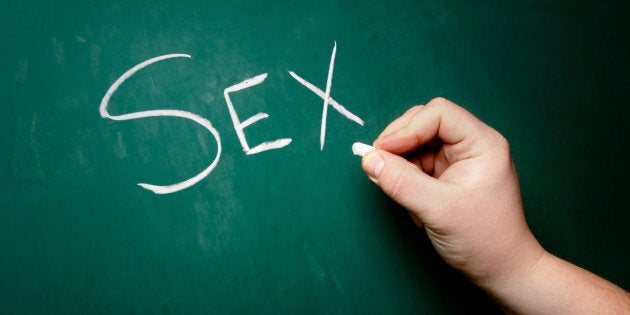
Porn is not new. But it has never been so accessible. For young people growing up online, porn is difficult to avoid. Like it or not, porn has become an issue we can't afford to ignore. But what can we do about it?
The first step is to understand what's going on. What are young people watching? Why? And how is it impacting them?
Young people see porn when they seek it out -- because they're curious, for sexual arousal, to learn about sex, to rebel against the rules, or for a joke. But they also see it unintentionally -- through uninvited 'pop-ups', games, a link from a partner or peer, or an unrelated search.
Over 90 percent of boys and over 60 percent of girls have seen pornography by the time they're 16. Boys are more likely than girls to be regular and enthusiastic consumers. A study of 16-year-old boys found that 73 percent used pornography at least once a week.
"What's the big deal?" you may ask. "It's just sex."
The thing is, it's not.
The porn that young people see communicates a whole range of deeply problematic messages -- about sex, but also about gender, power, aggression, bodies, pleasure, sexuality, consent and race.
According to research, the most popular porn depicts high levels of violence and degradation, which is overwhelmingly directed towards women.
That's also what performers and directors from the international pornography industry told me when I interviewed them for a film about porn's impact on young people. They spoke openly about the aggression towards women in the porn they make -- choking, gagging, hair pulling and slapping -- and about how popular it is.
Porn's models of sex and gender are disturbing.
According to LA-based performer 'Katie St Ives': "Human beings are not meant to f**k like this."
Unfortunately, there is no on-screen warning saying "Don't try this at home". Even if there was, it is unlikely it would be effective.
Porn is an incredibly powerful communicator. It can influence what we like and want without us even realising. Experts I interviewed explained how repeatedly linking watching porn to experiencing pleasure -- such as through masturbation -- can effect the brain itself, shaping sexual tastes. The effect is increased in young people, whose brains are still developing.
Young people, particularly young men, confirmed that porn is shaping how they think about sex, as well as their expectations and experiences. According to 19-year-old Jason*: "Seeing something on the screen, it makes you want to give it a go."
Young women said they felt pressured to do things that their partners have seen in porn. They described really struggling; wanting to please their partners while at the same time as not wanting to do things that they didn't desire and often considered unpleasant or even painful.
Porn has become a default sex educator for many young people.
If we want to help young people to build relationships and sexualities that are respectful, safe, mutually pleasurable and fully consenting, then we must tackle porn's influence.
To fail to do so is to ignore the elephant in the room.
This does not mean that we should show young people porn.
We can use mainstream media -- including advertising, music videos, children's television -- and the latest gaffes by sporting celebrities to teach children and young people to critique how popular culture represents men, women, power, aggression and sex. We can also use education resources designed for 'porn education'.
As young people grow older and their ability to think critically improves, our conversations with them about pornography can become more explicit (but still without the need to watch it).
We also need to help young people to develop the skills they need to resist porn's influence. For example, how to respond to peer-group pressure to watch porn, or pressure from a sexual partner to mimic it.
And, importantly, we need to help young people understand how fantastic relationships and sexuality can be when people respect and care for each other.
So, whose job is it to talk about porn?
Parents, for one. Young people learn a great deal from what they see modelled at home. And as awkward as 'sex' and 'porn' conversations may feel to both parents and their children, we should never underestimate their worth. Parents are a trusted and valued source of sexual information for young people.
Schools also have an important role to play. Age-appropriate curriculum addressing pornography's influence should be part of comprehensive respectful relationships and sexuality education in all secondary schools.
But it's not fair or realistic to expect teachers to take up that challenge without support. Teachers need access to quality training and teaching materials. They also need to know they have the backing of school leaders.
Pornography is a challenging and confronting issue. Tackling it is going to require leadership and courage -- in families, schools and at a political level.
It is a challenge we must take up.
Young people need relationships and sexuality education that is positive, relevant and real, and there is no question that we can do that better than porn.
*Name has been changed to protect privacy.
___________
'The Porn Factor' airs on Thursday, 4 August at 9.30pm on SBS 2 and will be available on SBS On Demand.